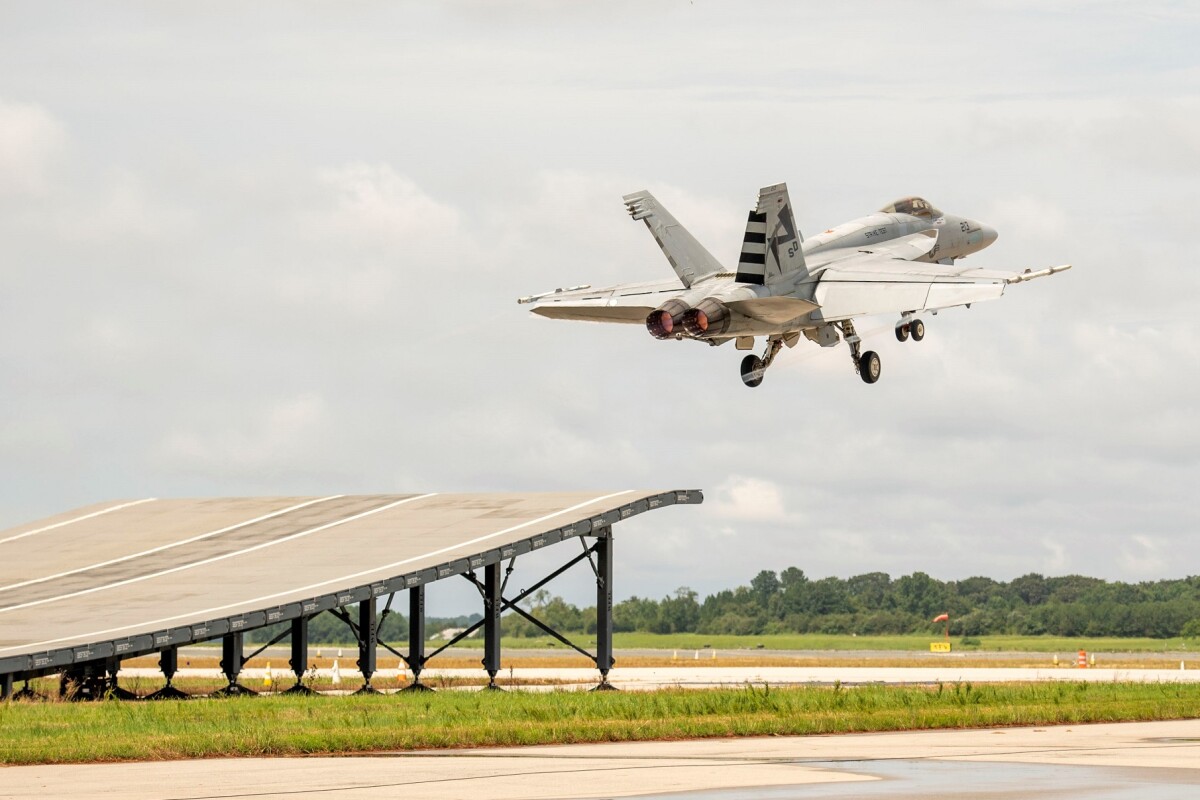Boeing's F/A-18 Super Hornet fighter jet has made its first launch from a "ski jump" ramp. No, it's not a dare or some weird new winter sport but a demonstration conducted with the US Navy to show the Indian Navy that the Super Hornet can safely operate from its ski-jump-ramp-equipped aircraft carriers.
Invented by the Royal Navy during the Second World War, the ski-jump ramp was further developed as a way to design aircraft carriers with shorter flight decks and make them better able to handle heavier aircraft. The idea is that instead of building up speed or being fired from a catapult to create enough lift for flight, the ski-jump redirects the aircraft into a positive rate of climb. It still isn't going fast enough for take off even when launched, but the ramp forcing the aircraft upward gives it time to accelerate to the airspeed required for sustained flight in the air before it starts to drop back down.
The modern ski-jump was introduced on Britain's Invincible-class aircraft carriers in the 1970s, which used Sea Harrier STOVL fighter jets for their air wings, and was retrofitted to the Centaur-class HMS Hermes. Though the Sea Harrier could lift off vertically with a full payload, the fuel expended doing so greatly decreased its range, so the boost of the ramp allowed it to spend more time in the air and then land vertically back on the carrier.
The idea was adopted by the Russian, Chinese, Indian, Italian, and Thai navies, and, today, only the US Navy and French Navy still use catapults. However, there was one drawback with the Invincible-class. It could only handle jump jets and helicopters, which reduced flexibility.
The alternative is the Short Takeoff but Arrested Recovery (STOBAR) system, where the aircraft uses the ramp to take off and arrestor wires on the flight deck to catch it as it lands. It's the system used by the Indian Navy and Boeing is keen to demonstrate that the catapult-launched Super Hornet can also operate with the ramp-and-wire system.
The recent test flights took place at the US Naval Air Station Patuxent River, Maryland, as both a practical demonstration and to validate previous computer simulations by Boeing. India is currently evaluating which fighters to purchase and the Super Hornet, with its advanced networking, longer range through conformal fuel tanks, infrared search and track, and a new advanced cockpit system, is one of the candidates.
"The first successful and safe launch of the F/A-18 Super Hornet from a ski jump begins the validation process to operate effectively from Indian Navy aircraft carriers," says Ankur Kanaglekar, India Fighter Sales lead for Boeing. "The F/A-18 Block III Super Hornet will not only provide superior war fighting capability to the Indian Navy but also create opportunities for cooperation in naval aviation between the United States and India."
Source: Boeing





